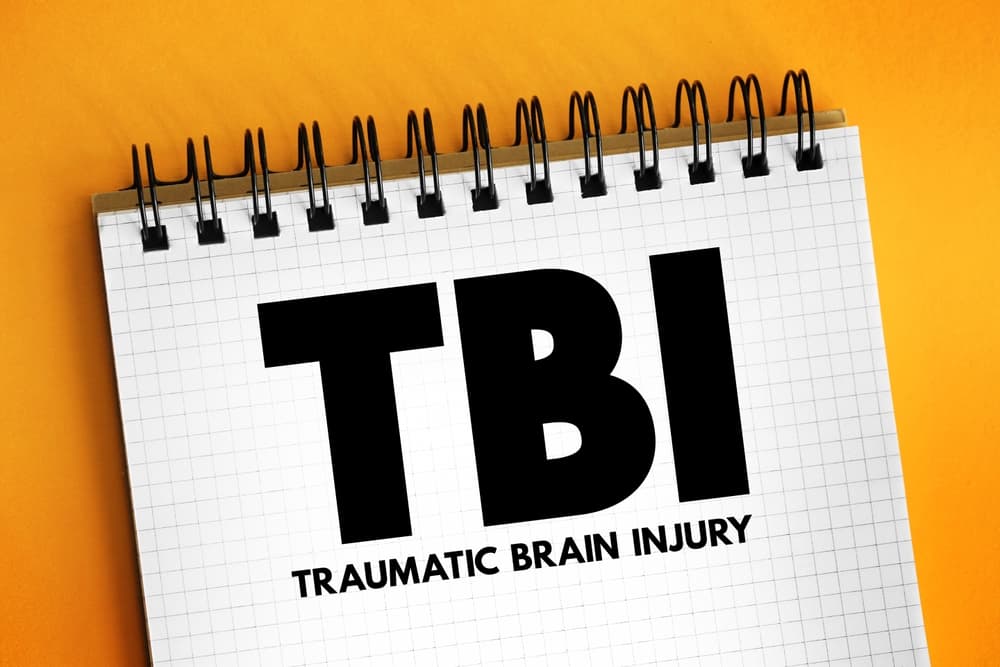Head injuries are the leading cause of disability and death among adults. They’re particularly common injuries, with an average of 1.7 million individuals suffering head injuries every year. If you suffer a head injury due to another’s negligent or intentional actions, you may pursue compensation for your losses.
Head injury is an umbrella term encompassing injuries involving the scalp, skull, brain, and other tissue within. Some head injury victims might recover fully with proper care and treatment. However, in the worst cases, a head injury can significantly affect a victim’s life and even result in death.
If you suffered a head injury, you need to seek full compensation for your losses from liable parties. Always be to consult a brain injury lawyer who can evaluate your claim.
Schedule a Free Initial Consultation
How Do Head Injuries Occur?
Head injuries arise after the head or body experiences a harmful event.
These injuries regularly happen as a result of certain accidents or incidents, including:
- Car accidents
- Pedestrian accidents
- Motorcycle accidents
- Truck accidents
- Bicycle accidents
- Physical violence
- Slip and falls
If you suffer a head injury due to someone else’s actions, you may have a valid claim for compensation.
Taking Legal Action After Suffering a Head Injury

Pursuing compensation after your head injury typically depends on your specific circumstances. You may file an insurance claim or, in the alternative, file a personal injury lawsuit.
For example, if you experience a motorcycle accident, you can first attempt to file an insurance claim through the at-fault driver’s insurance. You might successfully collect damages from the insurer for your injuries and other related losses; if so, no further action is necessary. However, if you encounter trouble with the insurance company, or the insurance company denies your claim entirely, you may need to proceed with filing a lawsuit.
Personal injury law exists to protect victims who suffer injuries because of another party’s negligent or intentional actions. When you file a lawsuit, you hold the at-fault party responsible for their actions while also seeking monetary recovery for your harm.
Whether you file an insurance claim or a lawsuit, either can be tricky and tough to navigate. Fortunately, a personal injury attorney can handle all tasks and represent your best interests from beginning to end.
Liability for Head Injuries
Regardless of your path to compensation, you’ll need to establish the other party was negligent and liable for your head injury. Doing so requires satisfying the elements of negligence and providing proof.
A party is negligent if they act in a manner inconsistent with that of a reasonable person in a similar situation. Proving a party was negligent requires proving they owed you a duty of care, they breached this duty of care, their actions were the cause of your accident, and you suffered damages.
In certain situations, someone may owe you a duty of care. For example, a commercial truck driver owes you a duty of care to drive safely to prevent causing an accident and injuries. Showing the defendant owed you a duty of care is the very first step.
Once a duty has been established, you need to show the defendant’s actions caused them to breach this duty. If that truck driver was driving under the influence, this is a negligent action that puts others at risk of harm. A situation like this can satisfy the second element.
Next, you must connect the defendant’s actions and your accident. For example, if the impaired truck driver was weaving in and out of lanes and this caused your collision, you can prove their actions were the actual and proximate cause of your accident.
Finally, you must show you suffered damages of some kind. If you sustained a head injury, you might be facing mounting medical bills to receive medical treatment for this injury. Things like medical bills and rehabilitation costs can count as damages.
Proving the defendant’s liability is often one of the hardest but most important parts. A personal injury attorney can thoroughly examine the details of your situation to determine who is at fault and work toward proving their liability.
Damages for Head Injuries
When you’ve suffered an accidental head injury, it can be costly. Monetary recovery in the form of damages can help cover many of your expenses and financial burdens.
A head injury can produce these economic and non-economic damages:
- Medical bills for past and future treatment
- Therapy and rehabilitation costs
- Loss of earnings
- Lost earning potential
- Emotional distress
- Pain and suffering
- Loss of enjoyment of life
When a defendant’s actions go beyond negligence and instead are malicious, reckless, or intentional, you may have the opportunity to pursue punitive damages. These damages not only provide additional recovery but primarily serve to deter future actors and punish the defendant.
Your personal injury attorney can calculate your damages and work diligently toward recovering full and fair compensation on your behalf.
How Much Is a Head Injury Claim Worth?
After suffering a head injury, many wonder what their head injury claim is worth and how to calculate the claim’s value. There is no average value for a head injury claim, as all cases are unique.
The monetary cost of a head injury usually depends on:
- The extent of your head injury
- The total amount of your medical bills
- Whether you’ll require medical treatment in the future
- Whether you’ll ever make a full recovery
- The total amount you’ve lost in wages if you required time off work
- Whether you might ever return to work
- Whether you have a permanent disability
- Any other monetary or non-monetary loss you suffered as a result of your accident and head injury
These and other details can help your lawyer determine how much your head injury claim is worth. Once they identify how much you’re reasonably entitled to receive in damages, your attorney can take steps toward securing your financial recovery.
Common Types of Head Injuries
There are many kinds of head injuries. Below are some of the most common.
Wounds
Wounds are still head injuries even if they don’t penetrate the skull and brain. The scalp is likely to suffer wounds if something strikes your head or you’re involved in a fall or accident.
Scalp wounds can be serious and require immediate medical treatment. If the laceration is big or deep enough, it may require stitches or staples to help the area heal.
Concussion
A concussion is a brain injury that occurs when the head or body suffers a forceful blow or jolt.
Concussion symptoms can include:
- Loss of consciousness
- Severe headache
- Dizziness
- Memory problems
- Blurred vision
- Ringing in the ears
- Nausea and vomiting
- Sensitivity to light and sound
The signs of a concussion may not be evident immediately after the accident or incident that causes the injury. Symptoms may take minutes or hours to appear.
Concussions are always serious even a “mild” concussion can cause more severe symptoms than your doctors expected. This is a primary reason you need to seek medical attention immediately and have a family member or friend observe you for new or worsening symptoms that can quickly arise.
Intracranial Hematoma
Hematomas refer to the collection of blood in one concentrated area. If a hematoma is intracranial, meaning within the skull, it means an area within the skull has suffered trauma, causing bleeding. The types of intracranial hematomas depend on the location of the injury.
An epidural hematoma is the pooling of blood underneath the skull but on top of the dura. The dura is a tough covering over the brain. Epidural hematomas often form due to a tear in the middle meningeal artery, which runs under the skull. Often, epidural hematomas form as a result of a skull fracture.
Subdural hematomas form underneath the skull but remain outside the brain. This type of intracranial hematoma usually forms from a tear in the veins that run from the brain to the dura. You can suffer a subdural hematoma after a skull fracture, but not always.
A contusion is essentially a bruise on the actual brain. It can cause bleeding and swelling around where the head suffered trauma.
Diffuse Axonal Injury (DAI)
A diffuse axonal injury is one of the worst traumatic brain injuries. If your head or body takes a substantial hit and the brain shifts within the skull, this rapid movement can cause the tearing of the connecting nerve fibers, called axons.
Most victims that suffer DAIs end up in comas.
While the loss of consciousness is the prevailing symptom, if a victim manages to remain conscious, they may exhibit the following symptoms:
- Headache
- Disorientation
- Dizziness
- Drowsiness
DAIs cause injury to several areas of the brain. The changes can be so microscopic they’re difficult to detect via diagnostic testing. Still, while these injuries can be tiny, they have a substantial impact on the health of the brain.
Skull Fracture
The skull serves to protect the brain. It is a bone that can fracture and break like every other bone in your body.
Skull fractures occur when the head suffers an impact severe enough to break the bone.
Skull fractures include:
- Open fractures: Also referred to as compound fractures, open skull fractures refer to an injury causing the skin on the scalp to break and the bone to emerge
- Closed fractures: Also known as a simple fracture, a closed fracture happens internally with no bone protruding from the scalp
- Basal fractures: Basal fractures occur around the “floor” of the skull, like the areas around the face, including the eyes and nose
- Depressed fractures: Depressed fractures get their name because they cause a depression or indentation in the skull
Some skull fractures are not visible, so it’s helpful to recognize the signs of a skull fracture, like swelling, pain, or warmth at the trauma site.
Head Injury Diagnosis and Treatment
Proper diagnosis is critical to understand the type of injury you’ve suffered and begin getting the medical treatment you need.
A medical professional can perform a physical examination, as well as a neurological and cognitive assessment. Diagnostic tests can be beneficial, including X-rays, computed tomography scans (CT scans), magnetic resonance imaging (MRI), and electroencephalogram (EEG).
Head injuries can be either open or closed. An open head injury, also called a penetrating head injury, is an injury that causes the skull to break open or an object to lodge itself in the brain. A common example of an open head injury is a gunshot wound to the head, as the bullet penetrates the skull and brain.
On the other hand, a closed brain injury means you’ve received some blow or trauma to the head, but nothing broke through your skull, and all injuries are internal.
Of course, treatment depends on the exact type of head injury you experience and the severity of the injury. Treatment can include rest, medication, therapy, hospitalization, or surgery.
Potential Long-Term Effects of a Head Injury
Almost anyone who suffers a head injury is at risk of lasting, life-altering effects.
Some of the most common consequences of head injuries include:
- Persistent headaches
- Seizures
- Memory loss
- Vertigo
- Visual changes
- Paralysis
- Cognitive issues
- Problems with balance
Some of these issues are great enough to substantially interfere with your life, work, and relationships. The lasting effects of a head injury can negatively affect your quality of life. The greater the effects of your injuries, the more your head injury claim should be worth.
A Brain Injury Attorney Can Help With Your Head Injury Claim

After suffering a head injury at the hands of another, consult with a top rated personal injury law firm in Chicago as soon as possible. Time is of the essence to take action, so the sooner you begin working with your attorney, the better.
Schedule a Free Initial Consultation Today!



